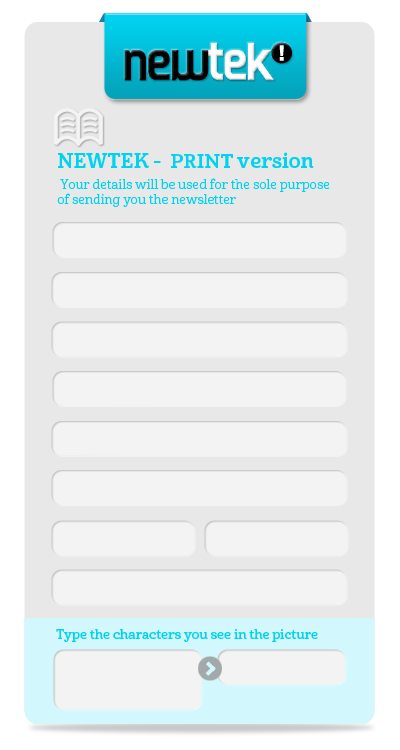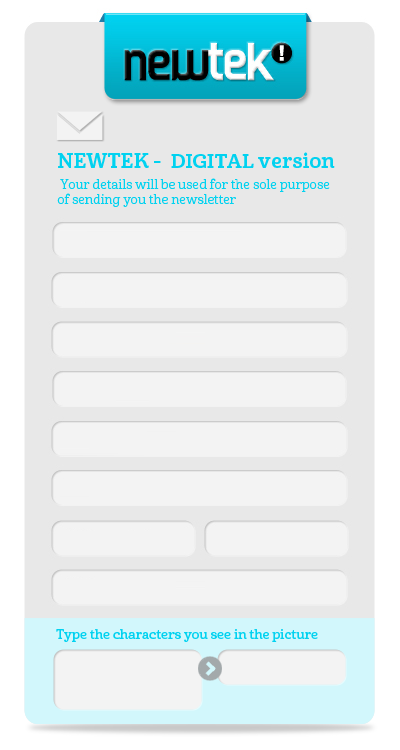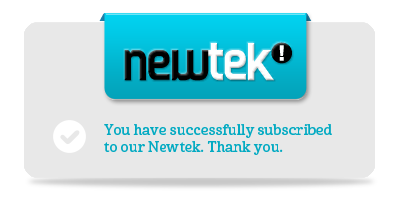THE EXPERT'S VIEW
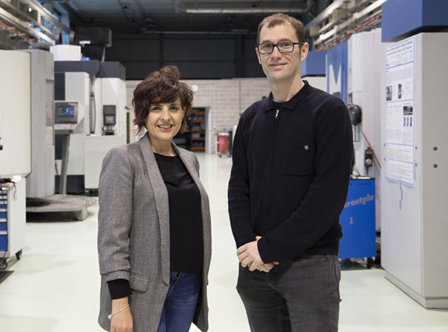
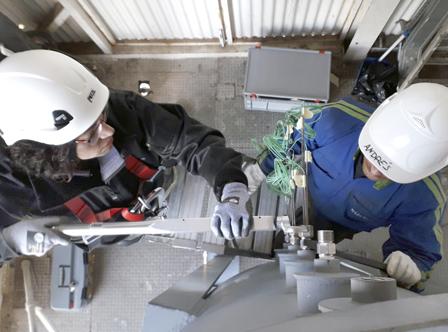
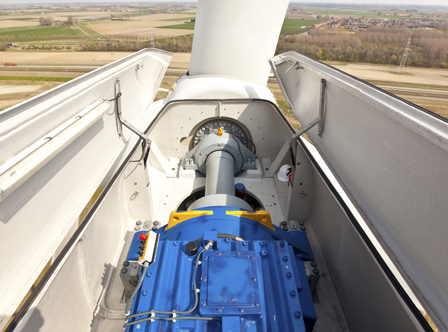
IK4-TEKNIKER has made available to all customers its expertise, equipment and technology to advance towards a predictive maintenance strategy that will enhance plant performance, optimise operations, give products more added value and, consequently, improve business outcomes.
The emergence of new technologies in the industry has not only made it possible to optimise production processes but has also helped to upgrade equipment maintenance practices. Nowadays, and thanks to real-time information analysis and monitoring, it is possible to anticipate potential failures and incorporate actions geared towards increasing system availability, reliability and service life, thus optimising OEE (Overall Equipment Efficiency) and reducing operating costs.
A maintenance strategy defines what, when and how to proceed. In the past, three scenarios applied subject to whether you were dealing with a breakdown (reactive maintenance), with a scheduled maintenance plan regardless of plant status (preventive maintenance) or were influenced by online data (condition-based maintenance). Nowadays, a fourth stage has been added that allows maintenance actions to be optimised by constantly monitoring equipment and processes by means of real-time data analysis, i.e., predictive maintenance.
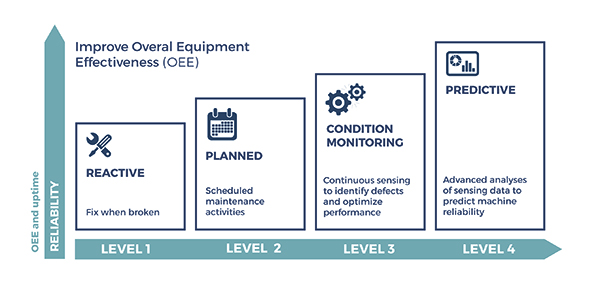
This new scenario allows users to anticipate problems before they actually occur by means of real-time capture and analysis of critical process signs and equipment conditions (temperature, pressure, vibrations, speeds, power, etc.). Information of this kind allows for the permanent surveillance of equipment and greatly enhances decision-making to manage resources more efficiently.
Enabling technologies to monitor and predict potential failures
In terms of maintenance, enabling technologies have provided the driving force required to make this great leap forward. Thanks to breakthroughs such as Big Data, the Internet of Things (IoT) and Cloud Computing, it is nowadays possible to obtain major computation capacity, signal integration, storage of large data volumes and online access to information from remote locations.
These enabling technologies together with advanced data analytics and modelling techniques (Data Mining, Machine Learning, artificial intelligence, neural networks, etc.), have made an exponential contribution as regards progress reported with regard to maintenance strategies currently in use to predict anything that can help overcome a problem before it actually happens (predictive or prescriptive maintenance, also called “Maintenance 4.0”).
We are dealing with a multidisciplinary process in which we must fully understand all the systems involved from the design stage all the way to in-use behaviour to determine signs indicative of fatigue and degradation.
The need to carry out an internal transformation
This new predictive maintenance strategy always requires that companies carry out in-house transformations. New technologies such as digital platforms must be incorporated, new operation and maintenance management procedures have to be implemented for assets and all decision-making processes must be transformed to remain one step ahead.
Status analysis is a crucial element to guarantee the successful implementation of an improved maintenance strategy. Consequently, this diagnosis must be performed both internally on the machines, components and processes involved and externally to establish what technologies must be incorporated.
The next step is to design a plan to achieve predictive maintenance. Optimisation goals must be clearly defined and be as specific, measurable and as realistic as possible to facilitate implementation and commissioning.
The IK4-TEKNIKER view
IK4-TEKNIKER offers companies its knowledge, expertise, equipment and know-how in this joint effort aimed at implementing predictive maintenance.
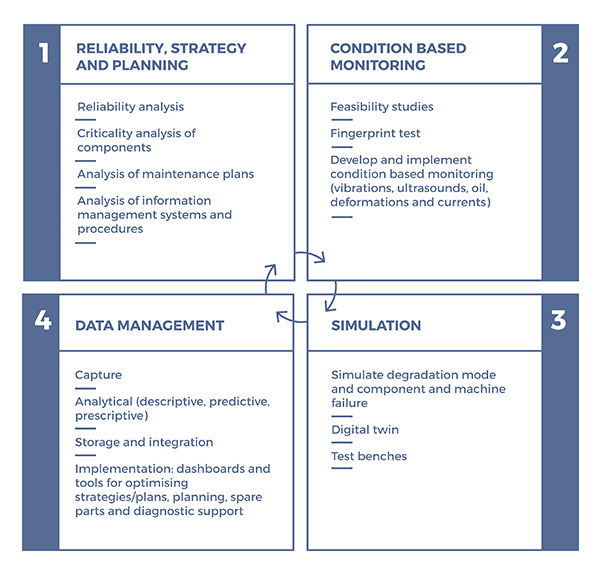
In addition to providing assistance to review the initial situation and define optimisation goals, IK4-TEKNIKER plays an outstanding role in terms of development, implementation and validation. The same applies to deploying the operation and maintenance solutions required to achieve these goals.
Consequently, IK4-TEKNIKER offers two major lines of maintenance solutions that take into account the current status of the asset to be maintained in terms of its life cycle, the type of customer and their optimisation goals.
Asset Management Solutions offer technological alternatives whose aim is to optimise plant performance, operations and, ultimately, business outcomes.
Smart Component Solutions, on the other hand, offer the development of "connected" products that deliver a higher added value to the end customer and allow for the implementation of a new business model for maintenance services (servitization).
Our added value in two dimensions
In this process it is important to underscore how complex it is to create suitable environments to predict failures. In most instances, the lack of historic information on processed data makes it necessary to implement a learning process to correctly ascertain how assets behave when in use.
IK4-TEKNIKER addresses this learning phase from a dual perspective: operating experience and simulation.
Operating experience developed throughout the entire life cycle of equipment and machines (design, validation, operation and failure), together with experience in terms of equipment monitoring (vibrations, ultrasounds, deformations, process signals, etc.) has allowed IK4-TEKNIKER to incorporate to data analytics and modelling expert knowledge and any knowledge resulting from monitoring equipment status.
Simulations, executed virtually or by means of test benches that can mimic in-service conditions, have allowed IK4-TEKNIIKER to enrich data models to improve predictive capabilities and obtain all the necessary knowledge.
Thanks to its multidisciplinary team, IK4-TEKNIKER has managed to integrate all disciplines to offer a global approach that is mathematical/algorithmic and uses machine learning techniques and artificial intelligence; the knowledge approach in IT for data management and security; and, finally, an approach connected to domain knowledge and business rules.
In addition to the value that the organisation is delivering, IK4-TEKNIKER owns an IoT platform (the Smart Asset Management - SAM) to integrate and use any knowledge that is produced.
In short, it is nowadays possible to enhance plant performance, optimise operations and, consequently, improve business outcomes by developing solutions that will eventually allow users to implement Predictive Maintenance.
